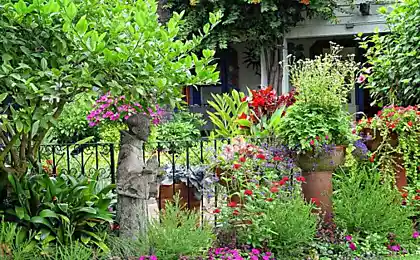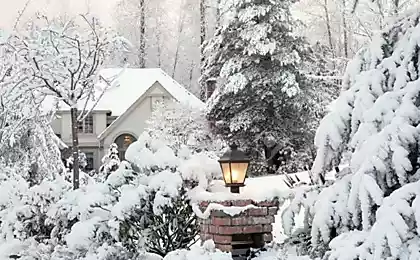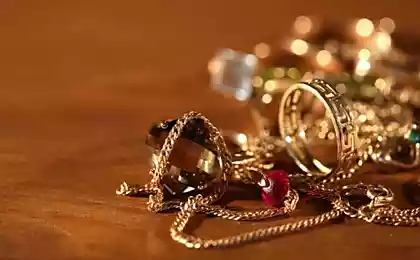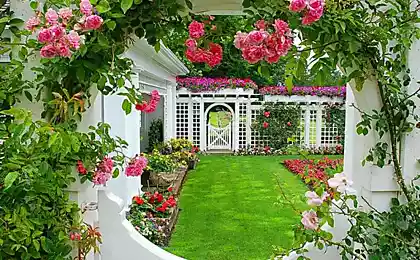165
Obrieta is a spectacular decoration for the garden
Perennial herbaceous plant from the cruciferous family, obrieta, is able to decorate any garden plot with its abundant floral carpet.
In the people, obrieta is also called an empty-mouthed person. Its squat and creeping bushes are ideal for planting on alpine slides. It feels great in rocky gorges, as well as in crevices of walls with dry masonry. Very beautiful blossoming branches of obriets, hanging and falling down with a bright flower wave. Some varieties, due to the sufficient height of the stems, can be grown even for cutting.
A huge number of small four-petaled flowers collected in small brushes almost completely hides its small oblong leaves. Color of flowers - white, purple, pink, red. Obrieta is unusual primarily because it does not throw off foliage for the winter, which is not afraid even of severe frosts.
Its color, sizzled in summer, turns bright green in winter. If the winter is too harsh, with a small amount of snow, then it is better to slightly cover them with dry leaves to preserve the bushes. And in early spring, after the snow cover comes down, bright shrubs of buriet will already please the eye in the middle of the empty area. The flowering period occurs in May and lasts more than 1.5 months. The plant blooms again in autumn.
Obrieta: cultivation and reproduction.
Cultivation of obriet
Obrieta: cultivation and reproduction.
Obrieta grows best and blooms in sunny places in temperate hot climates. Soil for planting is better to choose a light, neutral or slightly alkaline lime, not very fertile. In no case is it recommended to grow obrietah on clay, acidic or fatty peat soils. Excess moisture harms the plant, especially in winter, contributing to the rotting of the root part, so the best place to plant is rocky slides, hills or areas with good drainage. Mandatory regular watering is recommended only in southern latitudes. Too frequent watering can provoke excessive growth of green foliage and scant flowering. With insufficient moisture intake, the plant also loses its decorativeness, but after the resumption of watering, it comes to life again. In temperate climates, only young plants can be watered during their active growth. Video about Obrieta: cultivation and reproduction. During one season, it is recommended to mulch the soil near plants two to three times. Under the roots of the bushes, a layer of sand with a thickness of 3-5 cm is added, which has a very positive effect on the growth and condition of the plant. In spring and autumn, it is recommended to feed the plant with full mineral fertilizer.
After the first spring flowering, the stems of the buriet should be cut almost under the root to prevent its proliferation and stimulate the growth of young grassy shoots.
After pruning, the plant will bloom again in autumn, although not so abundantly. The stems grown after pruning, covered with thick decorative foliage, will create an excellent background for other alpinarium plants that bloom later. To preserve the decorativeness of the bush, faded branches and flower-bearers should be removed in time.
source
Source: /users/559
In the people, obrieta is also called an empty-mouthed person. Its squat and creeping bushes are ideal for planting on alpine slides. It feels great in rocky gorges, as well as in crevices of walls with dry masonry. Very beautiful blossoming branches of obriets, hanging and falling down with a bright flower wave. Some varieties, due to the sufficient height of the stems, can be grown even for cutting.
A huge number of small four-petaled flowers collected in small brushes almost completely hides its small oblong leaves. Color of flowers - white, purple, pink, red. Obrieta is unusual primarily because it does not throw off foliage for the winter, which is not afraid even of severe frosts.
Its color, sizzled in summer, turns bright green in winter. If the winter is too harsh, with a small amount of snow, then it is better to slightly cover them with dry leaves to preserve the bushes. And in early spring, after the snow cover comes down, bright shrubs of buriet will already please the eye in the middle of the empty area. The flowering period occurs in May and lasts more than 1.5 months. The plant blooms again in autumn.
Obrieta: cultivation and reproduction.
Cultivation of obriet
Obrieta: cultivation and reproduction.
Obrieta grows best and blooms in sunny places in temperate hot climates. Soil for planting is better to choose a light, neutral or slightly alkaline lime, not very fertile. In no case is it recommended to grow obrietah on clay, acidic or fatty peat soils. Excess moisture harms the plant, especially in winter, contributing to the rotting of the root part, so the best place to plant is rocky slides, hills or areas with good drainage. Mandatory regular watering is recommended only in southern latitudes. Too frequent watering can provoke excessive growth of green foliage and scant flowering. With insufficient moisture intake, the plant also loses its decorativeness, but after the resumption of watering, it comes to life again. In temperate climates, only young plants can be watered during their active growth. Video about Obrieta: cultivation and reproduction. During one season, it is recommended to mulch the soil near plants two to three times. Under the roots of the bushes, a layer of sand with a thickness of 3-5 cm is added, which has a very positive effect on the growth and condition of the plant. In spring and autumn, it is recommended to feed the plant with full mineral fertilizer.
After the first spring flowering, the stems of the buriet should be cut almost under the root to prevent its proliferation and stimulate the growth of young grassy shoots.
After pruning, the plant will bloom again in autumn, although not so abundantly. The stems grown after pruning, covered with thick decorative foliage, will create an excellent background for other alpinarium plants that bloom later. To preserve the decorativeness of the bush, faded branches and flower-bearers should be removed in time.
source
Source: /users/559
Ecover - make bottles thrown into the ocean of garbage
Collection of exclusive cars for Floyd Mayweather




















